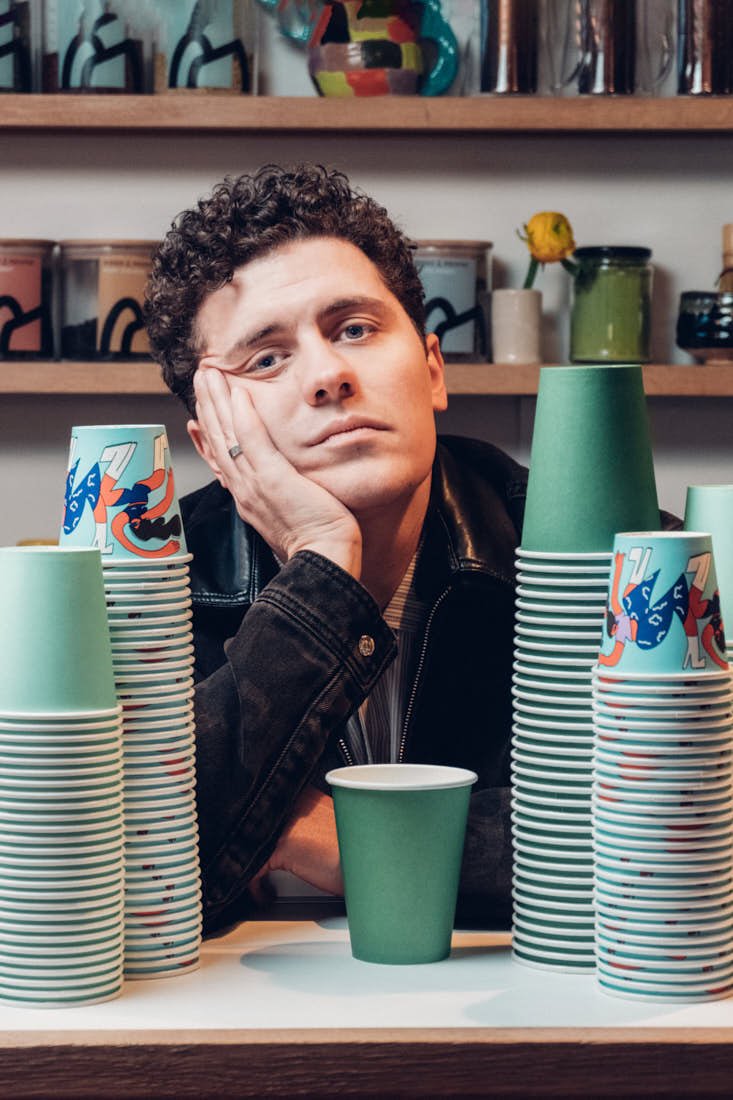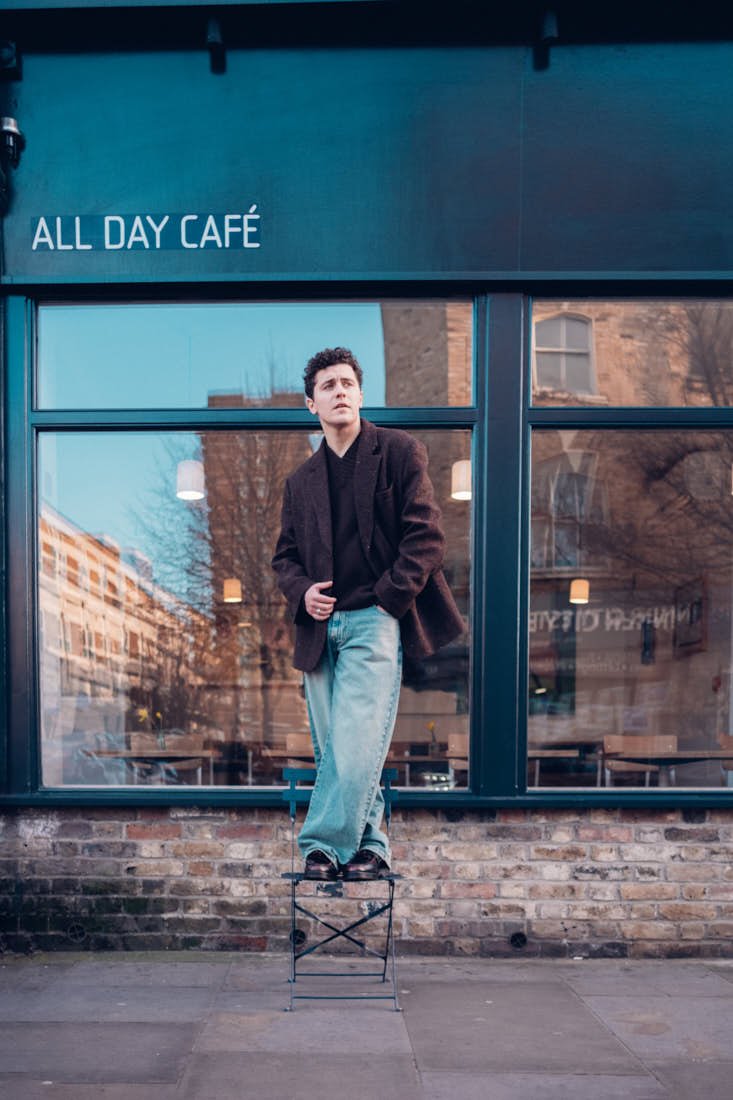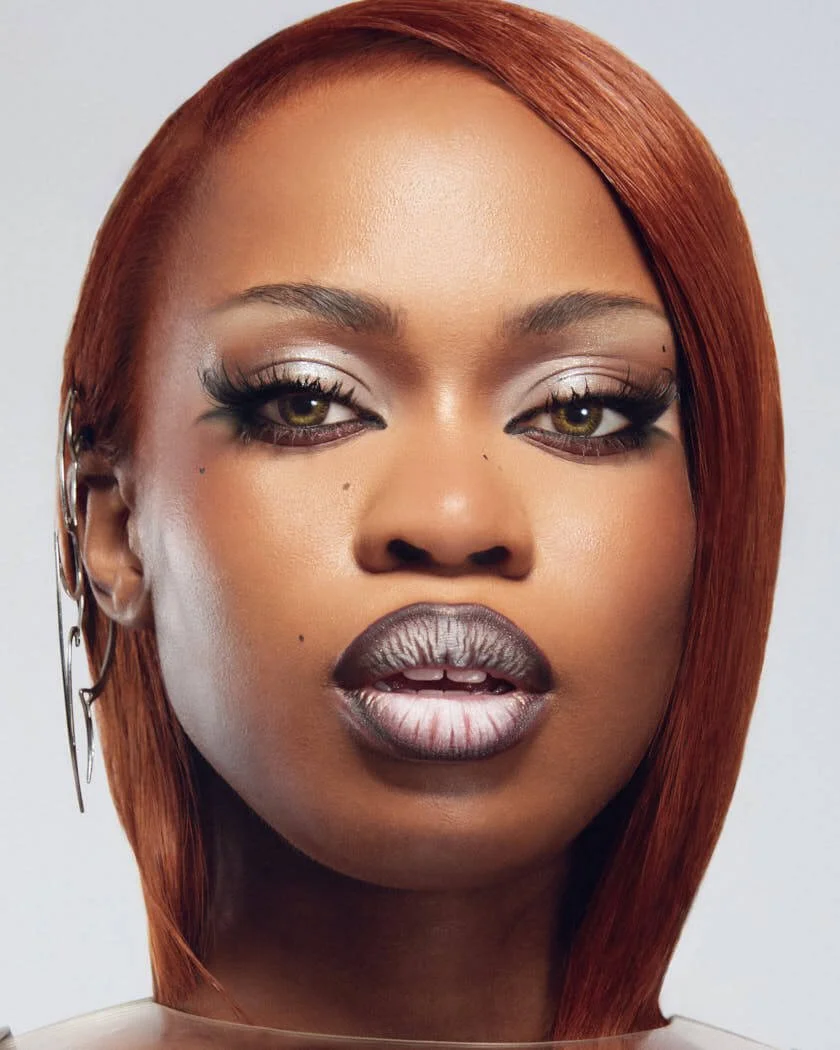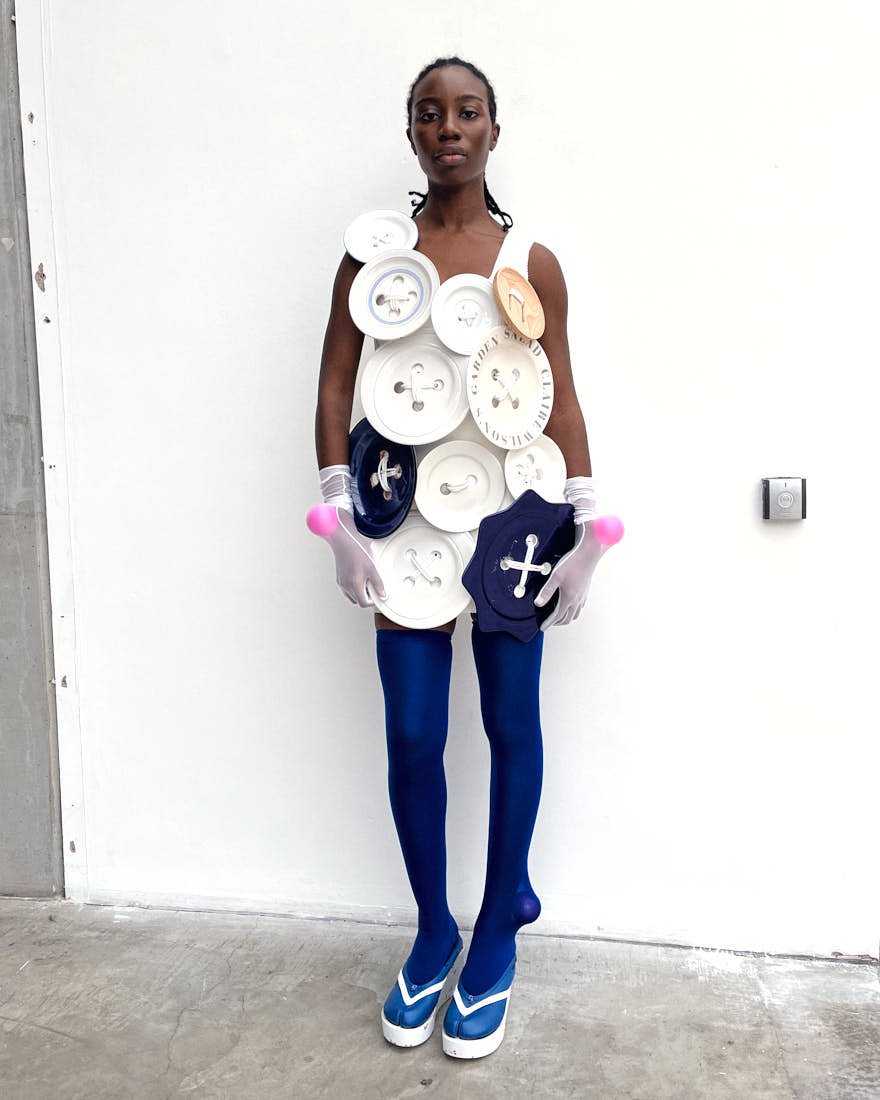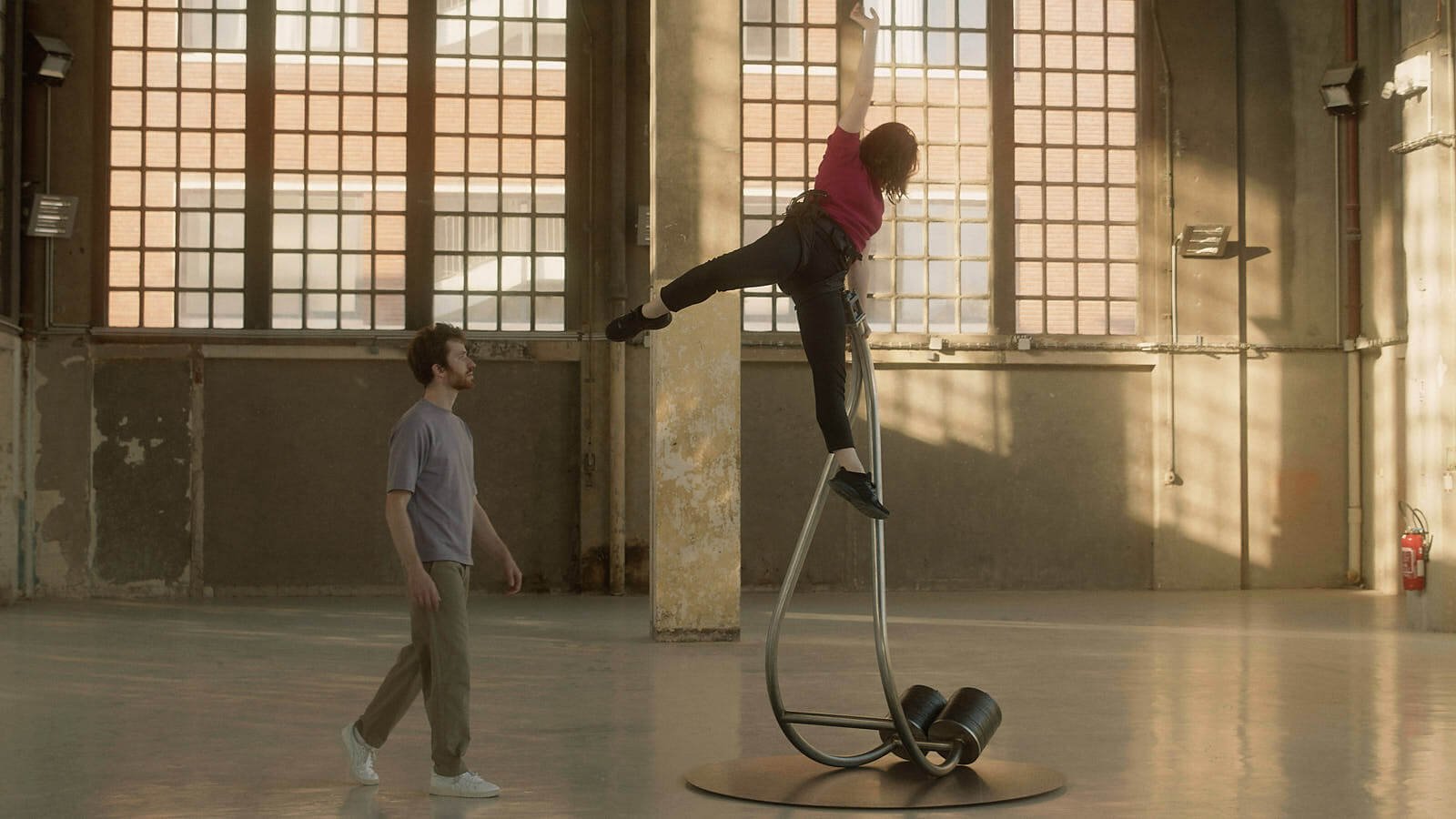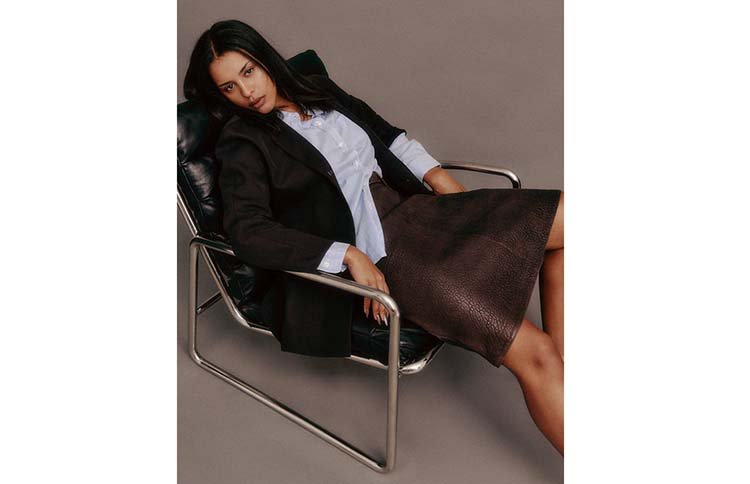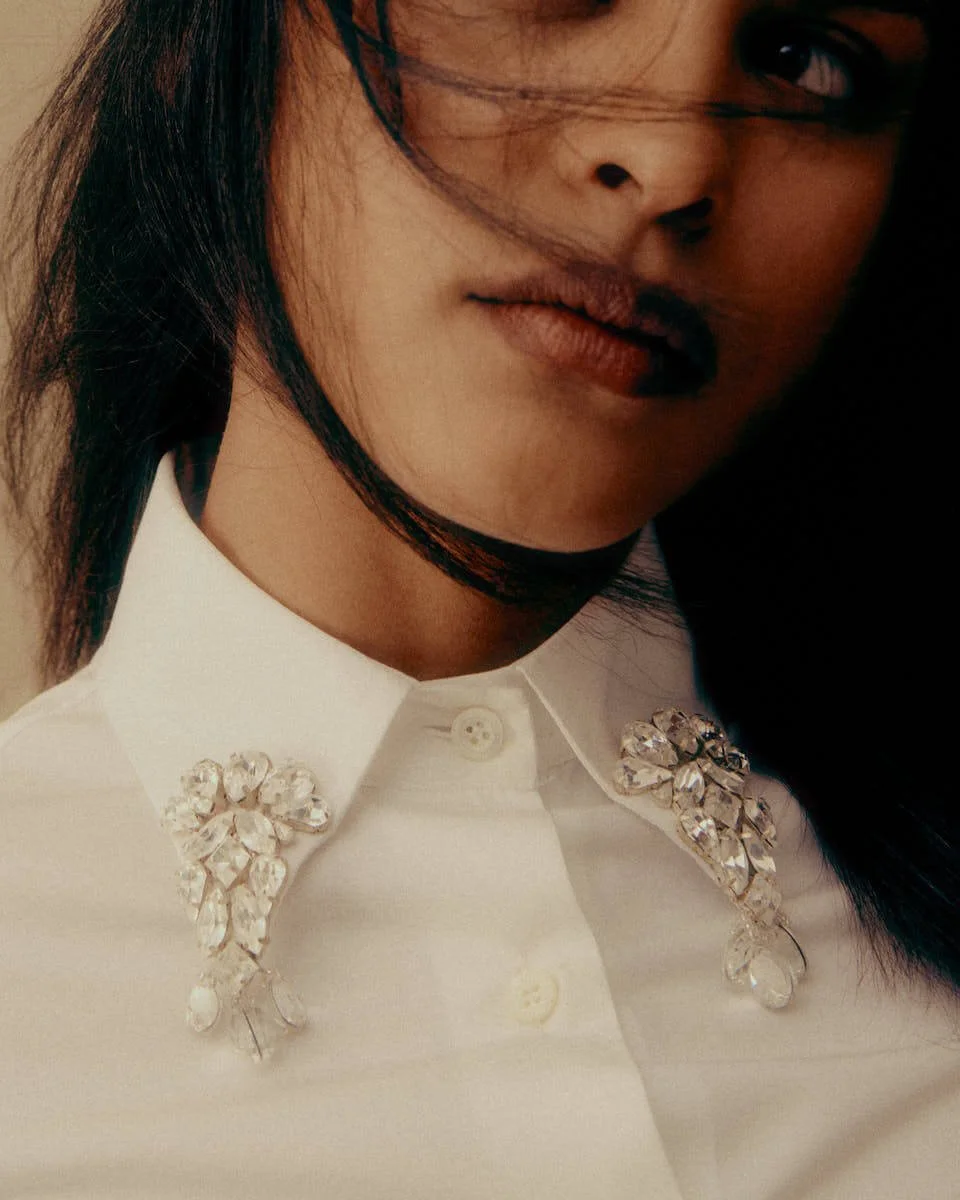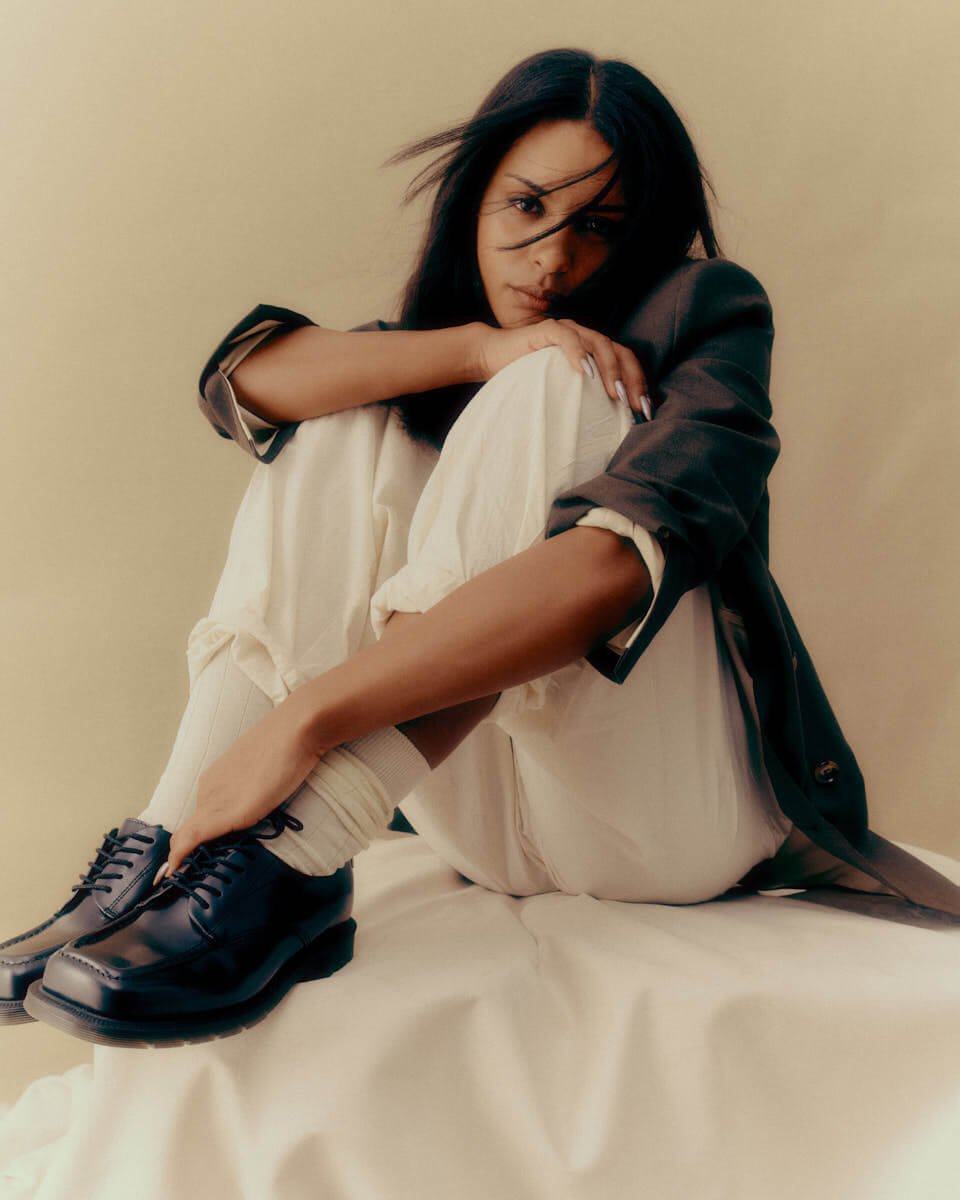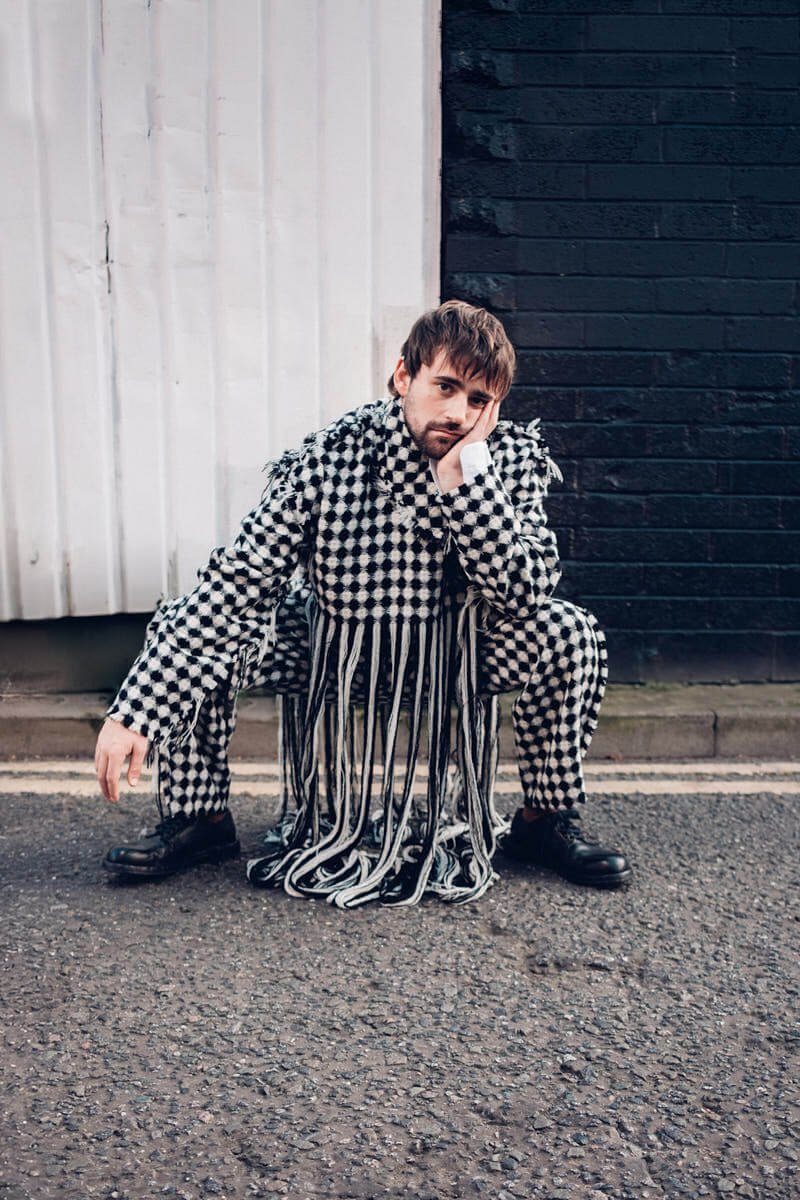.aesthetic talk
MORENIKE CAXTON-MARTINS
*Layers Of History
written + interview Tagen Donovan
In the rapidly shifting world of contemporary art, where tradition meets radical innovation, Morenike Caxton-Martins ignites the flame of a new cultural metamorphosis.
Deeply rooted in Nigerian heritage and diasporic experiences, Caxton-Martins encapsulates a rich dialogue between the past and the future, blending traditional craftsmanship with modern technology to explore complex themes of identity, memory, and cultural transformation. Embedded within Caxton-Martin's artistic process is an intricate dance that layers tactile, organic materials—such as Agbalumo and Cocoa Beans—with cutting-edge digital practices such as UV printing and 3D scanning. This fusion of the old and the new is not merely a technical exercise but a profound exploration of how history and heritage can be reinterpreted through a contemporary lens. "I view my process through a retro-futuristic lens; by manipulating these objects, I visit the past while creating a new future." The emphasis on specific fruits used within Martin's process carries the weight of history, symbolically their story is still being written, awaiting new chapters to be added to the ongoing narrative.
Guided by explorations of dual identity, acknowledging that her work is a constant negotiation between two worlds, allowing both to coexist and inform each other. Firmly anchored by her Nigerian heritage and formative memories in Lagos. The artist's most recent projects stem from a combination of prayer, artistic experimentation, and a desire to preserve the fleeting beauty of organic materials. Establishing a meticulous process that involves scanning and manipulating fruits, pressing them onto metal sheets using soap etching, and then capturing the resulting images through photography. These fruits, particularly those native to Nigeria, serve as powerful symbols of memory, identity, and the passage of time. For Caxton-Martins, the process of working with these fruits is a way to evoke the emotions and memories that define her connection to home.
Embodying the very essence of change— the artist sees her work as constantly evolving, much like the fruits she works with, which decay and transform over time. This progression mirrors the human experience, whereby growth and change are inevitable. By turning some of her works into still snapshots of time, she attempts to decelerate this process of decay, creating a visual representation of how moments, though fleeting, can be preserved and reinterpreted. Delving into the significance of soap ground etching, a technique that not only leaves physical marks on metal but also evokes the tribal marks of her Y oruba heritage. These marks, which are traditionally seen as a sign of beauty and belonging, are a powerful metaphor within the artist's work, linking cultural roots and encouraging a deeper reflection on the distinctions between Western and African beauty standards. This technique, like much of her work, is a way of engaging with the past while challenging contemporary perceptions of identity.
Morenike’s work is testament to the power of art to transcend time and space, offering new ways of understanding our shared human experience in a world that is constantly in flux. Challenging us to reconsider our relationship with history, to embrace change, and to find beauty in the ever-evolving nature of our identities. As we stand at the crossroads of tradition and innovation, Morenike’s art serves as a powerful reminder that the story of our cultural heritage is still being written—and that we all have a role to play in shaping its future.
Tagen Donovan
Your practice involves both traditional and modern techniques. How do you balance the preservation of traditional methods with the introduction of new, radical ideas?
Morenike Caxton-Martins
I blend traditional and non-traditional techniques by layering tactile processes, experiences and play, drawing inspiration from my childhood and using organic materials such as agbalumo and cocoa beans.
Incorporating digital practices such as UV printing, 3D scanning, 3D printing, photography and Photoshop to explore contemporary and future possibilities. Viewing my process through a retro-futuristic lens; by manipulating these objects, I’m able to visit the past while creating a new future. The layers of history seemingly present in these fruits (cocoa, agbalumo, sugar cane) open them up to new interpretations - symbolically their story is still being written.
The balance of techniques is crucial for my work and personal identity. It’s a way of grounding myself—acknowledging that the past influences the present and shapes the future. Staying balanced means existing in limbo, not deviating too far to the left or the right, but rather, allowing both traditional and modern methods to complement each other and coexist within my practice.
How did you develop your most recent project from its initial concept, inspired by your Nigerian heritage and diasporic experiences, to its final execution, and how did each stage contribute to the overall outcome?
Firstly, I pray to God. From there, an amalgamation of things I have learnt over the last few years in my artistic practice. This process stemmed from experimenting with flattened 3D scanned images transformed into 2D pixelated onto orange fruit slices the year prior. I thought, why not reverse the process by working with a definitive material due to the temporality of the organic substance (fruit)?
The composition of the natural material (fruit) would decay. Thus, having a limited time to work with because of factors such as temperature and attraction of fruit-flies. This led to a layering of processes using conventional and unconventional methods which I then printed onto metal sheets. As well as pressing the fruit directly onto the metal sheets using a process called soap etching. Thereafter, I would photograph the new metal sheet with visible fresh/ripened fruits that once were flattened directly onto the metal sheet. Otherwise, I would use fruit native to my homeland, fruits nostalgic to growing up in Nigeria. For example, starfruit. The shape reminds me of how my mother referred to me as a “star” during my childhood. These affirmations have remained with me ever since.
I would use a brand-new etched plate of crushed fruits related to my developmental years in Nigeria, and afterwards UV print the photographed image of the combined processes listed earlier on the latest metal sheet. Consequently, forming new visual languages that obscure time. These methods are interchangeable as results vary from the slightest change including how long the plates are left in the acid. The images are interchangeable depending on the method that is chosen; sometimes the metal sheets are UV-printed before the fruit is pressed vice versa.
Playful nostalgia is evoked within your work. How do you see this interplay of past and present contributing to the broader narrative of cultural change and modern expression? How do the past and present come into your work, especially in the lens of cultural change and modern expression?
I believe I can utilise life history by reflecting on my parent's experiences to understand the generations before me by providing a cultural critique of the present and past. As well as, engaging with the everyday Nigerian whether it be a nanny, cook or gardener and looking introspectively at self.
Your use of photo etching and UV printing is unique. How did you develop these techniques, and what do they represent in your work?
My process emphasises the importance of play, change and experimentation. The photo-etching process involves the burning of an exposed image using acid. I experimented with soap ground etching to blur boundaries and propagate something akin to translation rather than a simple copy/transfer. This process required me to paint soap detergent directly onto raw fruit (cocoa bean/agbalumo) and press it onto a metal plate. It left marks similar to tribal marks - a beauty mark and evidence of belonging - from Nigeria. The work has evolved and I can now UV print onto the (photoetched) metal sheets to create layers of invisibility and represent the obscure quality of memory.
Could you explain the significance of soap ground etching in your process? How does this technique help convey the themes of memory and heritage?
Soap ground etching is a subsection of etching that requires a mixture of white pigment, soap detergent, oil and water applied directly onto the skin (external/ internal) of fruit like cocoa beans using my hands to press the fruit directly onto the metal plate. The remnants left on the plate are similar to tribal marks. Tribal marks are created by cutting or scarring the cheeks of an individual with sharp objects, a traditional cultural practice done among the Yoruba people. While I do not bear these marks myself, as a Y oruba individual, I value my cultural heritage and reflect on the distinctions between Western and African beauty standards. These marks link to my homeland and encourage introspection and a sense of belonging by inherently evoking remembrance of my Nigerian community.
How does your work speak to the notion of change? Particularly from the POV of using traditional techniques to create something contemporary?
My work is in constant change. Fruit decays, I take the matter through a journey of decay, ensuring it changes throughout my work by manipulating it from when it is ripe to when it deteriorates. My choice of when to use the fruit illustrates my impact on the concept of change. This progression mirrors the transitional nature of the human life experience. The works accompanied by this collection of metal sheets, 3D printed imagery and casts of sugar cane in sugar are- resin cubes with 3D scanned self-portraits of chewing fruits such as sugar cane and bananas- UV-printed on an orange slice and agbalumo. By turning some of the works into a still (resin cubes) snapshot of time I decelerate the speed of rot. As a result, the work is only to be perceived at a specific moment in time.
“I view my process through a retro-futuristic lens; by manipulating these objects, I visit the past while creating a new future.”
Morenike Caxton-Martins speaks with Tagen Donovan
for LE MILE Nr. 37 - Fall/Winter 2024 Edition
In what ways do you see your practice as a dialogue between the past and the future, particularly in the context of Nigerian cultural history?
It’s from a retro-futuristic lens. It’s a personal story using fruits in different ways and how the bittersweet nature of these elements reflects Nigeria's political instability. My memories of Nigeria are marked by corruption and greed that tarnishes the country's image, in contrast to the nostalgic period my parents experienced in the 1970s. That period - when £1 was equivalent to 2 Naira - holds a nostalgic charm for my parents, who often reminisce about it as sweeter times - a period, I have yet to experience. I haven’t experienced the systems my parents had. So it’s that dialogue of their memories and mine. The Nigeria they lived in.
Fruits like cocoa beans and Agbalumo play a central role in your art. What do these fruits symbolise for you, both personally and culturally? How do you use these organic elements to explore and convey complex emotions and memories?
Agbalumo is my favourite fruit, it’s sweet and bitter. It has marks and dust all over it but when you open it, it's beautiful, almost like a flower when punctured. It symbolises something bittersweet. Growing up I had a sweet-tooth, and agbalumo was my favourite fruit so my parents would stock the house with it and it made me happy. So, it’s all of that: family, joy, bittersweet. It takes me back to being a little girl. I use these fruits because their lifespan mirrors the humans. Watching them grow and change over time - in shape and colour - is like watching yourself grow. It’s a reflection of life. Y ou grow up, get bruised, things happen to you and you try again, you evolve and learn and grow. It’s about life stages. I’ve grown and changed so much in the past years, learning is important to me, and becoming confident in my voice. I use fruits to capture all of that. It’s life.
Your work blurs the lines between different art forms such as casting, printing, and photography. How do these interdisciplinary approaches enhance your exploration of identity and heritage? How do these varied techniques contribute to the broader discourse of cultural metamorphosis in science and art?
I’m multifaceted. My experiences are diverse. Growing up in Lagos, and moving to London at 13, I’m combining all my experiences by using all these different mediums. I don’t feel as though life is just one thing. It’s many experiences happening at the same time. So the work in itself is that: various things happening at once. Science isn't definitive because things are always changing. Using all these materials allows me to fluctuate between different time zones and speak to life’s uncertainty.
There’s so much we don’t know. Science is always changing. That’s why I believe materials have their agency. They can change and evolve so we shouldn’t be stuck on one notion of what something is but rather think more about what it could be. That’s how I see science and art - as change, agency and evolution. It’s constantly evolving and never staying the same. The materials. The work. Myself.
As we move further into an age of change, what are your aspirations for the future of your practice, and how do you hope it will influence the broader cultural landscape?
With my practice, I’ve been thinking more as a designer lately. I don't think I’m just meant to be an artist. There are different facets of myself and they all interplay at different points. I would love to make my work into intangible materials and mix them with tangible experiences and materials. I’d love to play with scale and incorporate a more digital side.
On a broader landscape, I want to speak to science’s role in art: the potential and possibilities. I want my work to push the boundaries of what can be experienced. That’s what drives my work. It can all change and I want to be at the centre of changing what’s possible.
What conversations do you aim to spark about identity and belonging, and how do you envision your art contributing to a deeper understanding of our shared human experience in the age of radical change?
I’m very grounded in my identity as a Nigerian. Moving to London made me more aware and confident in my identity. Observing the different dynamics, people, relationships and all of that; has made me much more reflective. I miss Lagos. I miss living there, but I know I have a privileged lens of life. The day-to-day reality over there isn’t easy, people have lives and aspirations but it’s not easy for them to make it a reality. In London, it’s completely different. The systems are different.
Many things are happening in the world and a lot feels in flux. I want my work to speak to that flux and how nothing is ever simple. My work and process is quite complex. Life is complex. Change is always happening and I want people to see my work and have that feeling of time and change: not fearing it but living fully in it.
credits
all art work by the Artist Morenike Caxton-Martins






